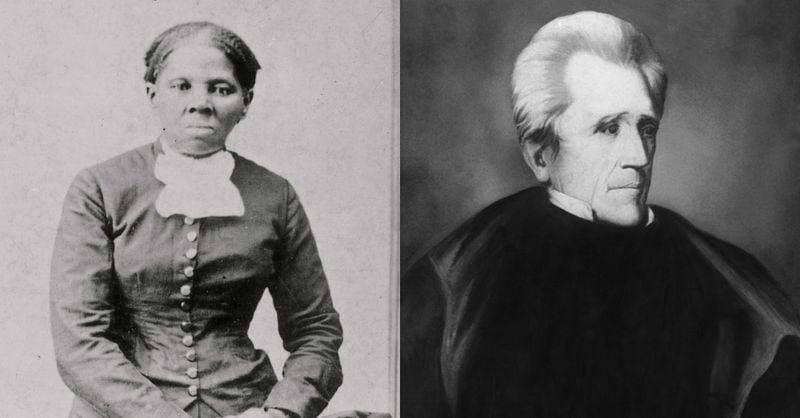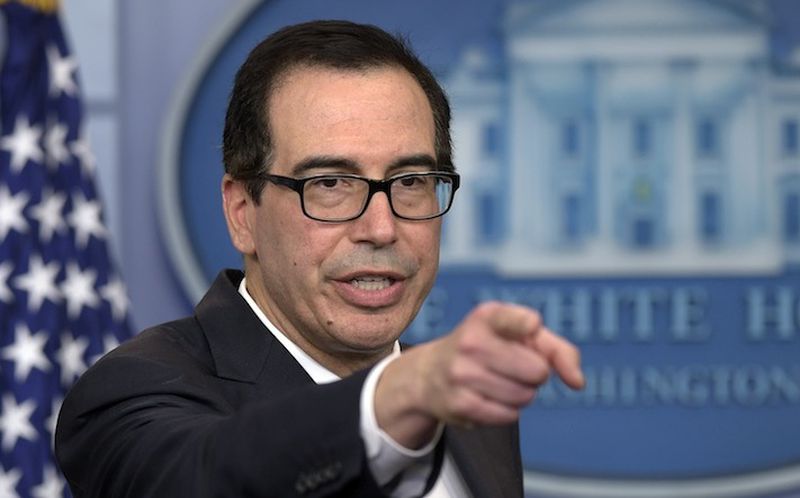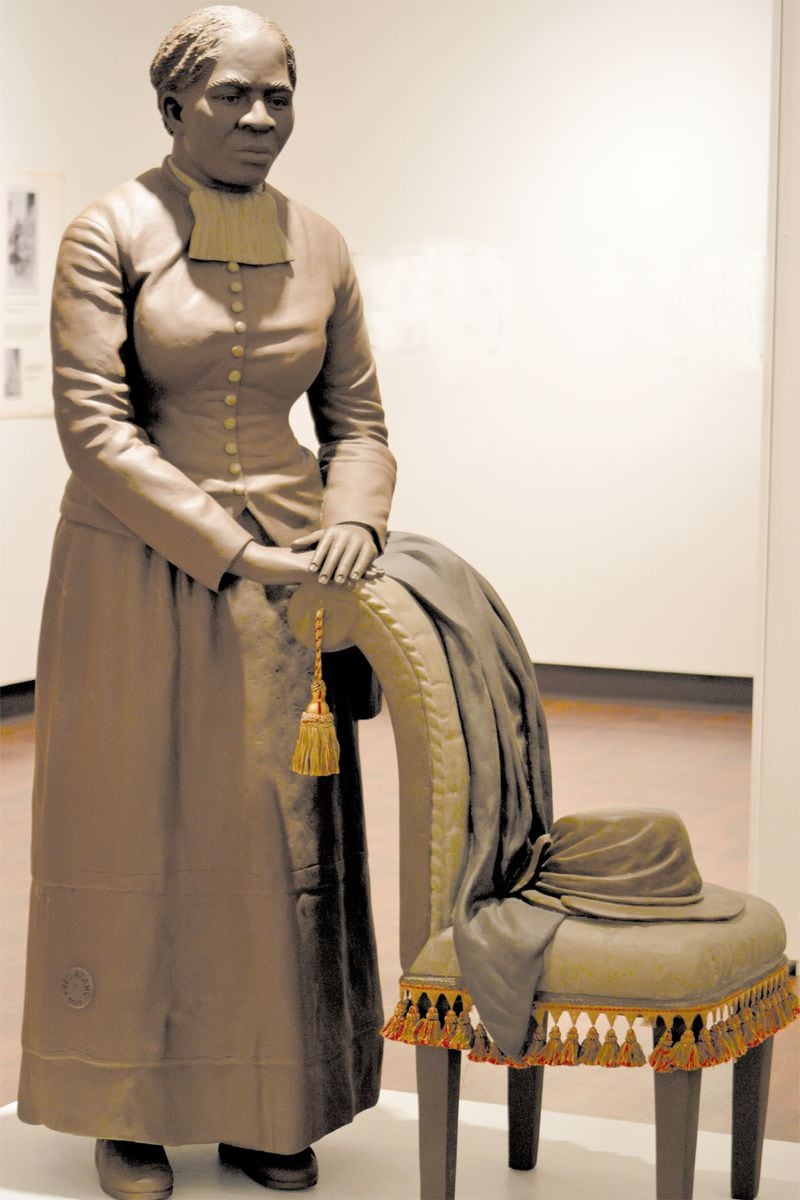Hopes of one day pulling out a Tubman to pay for $20 worth of gas might be dwindling.
On Thursday Treasury Secretary Steven Mnuchin seemed to devalue the idea, which was promised by the Obama administration, to redesign the twenty by removing the image of Andrew Jackson and replacing it with former slave and abolitionist Harriet Tubman.
In an interview with CNBC, Mnuchin said the administration would consider the proposal but“right now we’ve got a lot more important issues to focus on.”
Mnuchin's comments were met with shock from people and organizations who worked to get Tubman's face on the $20 bill.
"My reading of what Mnuchin said is that he is not willing to say yay or nay about this. He is simply unwilling to focus on it right now," said Susan Ades Stone, executive director of Women on 20s, the organization that pushed for adding women to American currency.
“We are not surprised that Mnuchin is taking this backburner approach to the currency change ... including women and people of color on our currency can enhance our standing as a nation by bringing us together instead of tearing us apart.”
Mnuchin’s hesitance might also stem from his boss, President Donald Trump.
Throughout the 2016 presidential campaign, Trump praised Andrew Jackson, whom he considers a hero and is said to have modeled his populist administration after.
A portrait of Jackson — a slaveholder who also presided over the forced removal of the Cherokee nation from Georgia — hangs in the Oval Office.
Last March, Trump even placed a wreath on Jackson’s tomb at the Hermitage in Tennessee to mark Jackson’s 250th birthday.
After Obama’s announcement in April 2016, Trump said Tubman might be more appropriate on the $2 bill, which has the lowest circulation volume of any bill.
“I would love to leave Andrew Jackson and see if we can maybe come up with another denomination,” Trump said at the time.
Ades Stone told The Atlanta Journal-Constitution that the organization has been concerned about Trump’s affinity for Jackson, but held out hope.
“We are disappointed that our president feels this way and does not acknowledge that our money should honor woman and people and color. Do we think he will succeed in keeping woman and people of color off our money forever? No,” Ades Stone said.
“The American public wants this and it is bipartisan. We are confident that if there is an announcement that they will never put Harriet on the $20, the public outcry will be so intense that there will be consequences.”
Credit: Susan Walsh
Credit: Susan Walsh
In 2016, the initial plan was to replace the image of Alexander Hamilton on the $10 bill — as part of the Treasury's redesign of bills to make them harder to counterfeit — with the image of a woman.
That thinking began to change, in part because of the success of the Broadway smash “Hamilton,” as the founding Treasury secretary’s profile climbed.
The focus then shifted to the $20 bill.
Then-Treasury Secretary Jacob J. Lew announced that Jackson would move to the back of the $20 bill, replaced on the front by Tubman, a former slave and the renowned conductor of the Underground Railroad.
"We were really excited about her when she was selected to be the face of the $20," said Melanie Byas, director of marketing and digital strategy at the Harriet Tubman Museum in Macon. "We are anxious to see how they decide to proceed. She deserves a spot and this would be a fitting tribute for her contributions."
Lew said that images of women would also be added to the back of the $5 and $10 bills.
Martin Luther King Jr. was also supposed to be depicted in some way — perhaps in a group portrait — on the back of the $5 bill as part of the Treasury Department’s currency overhauls.
The back of a revamped $5 bill, which features Abraham Lincoln on the front, will mark key events at the Lincoln Memorial, including Marian Anderson's 1939 performance, which was supported by First Lady Eleanor Roosevelt, and the Aug. 28, 1963, March on Washington, when King delivered his "I Have a Dream" speech.
Final designs were supposed to be unveiled in 2020.
Tubman would be the first African-American to ever appear on U.S. currency, and the third woman.
According to the U.S. Mint, Martha Washington appeared on the face of the $1 Silver Certificate of 1886 and 1891, and on the back of the $1 Silver Certificate of 1896. Pocahontas was featured on the $20 bill in the 1800s as part of a group portrait.
The momentum to get Tubman on the $20 bill started in 2015, when Ades Stone's "Women on 20s" launched its campaign.
In May 2015, they delivered a petition to the White House urging President Obama to consider replacing Jackson on the $20 with the image of the former slave.
Aside from being a slaveholder — hundreds of slaves were kept at the Hermitage — the seventh president also played a key and controversial role in moving Native Americans off their lands in the 1800s.
His Indian Removal Act of 1830 authorized him to negotiate with southern Indian tribes for their removal to federal territory west of the Mississippi River in exchange for their ancestral homelands. The mass removal of the Cheorkee tribe to Oklahoma became known as the Trail of Tears.
Tubman, meanwhile, was born a slave on a large Maryland plantation around 1822. She escaped in 1849 and spent the rest of her life returning to the Deep South to help hundreds of captured slaves escape bondage.
Byas, of the Tubman Museum, called the woman known as “Moses” an “under-celebrated figure" whom she hoped would finally get her due.
“She was a visionary who was determined to uplift her people,” Byas said. “She was a trailblazer in American history, and this country has advanced because of people like her.”









